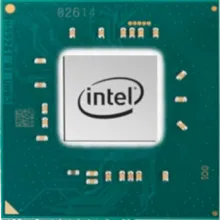
The Intel Celeron Processor 5205U is a low-power, dual-core processor belonging to Intel's Celeron lineup. Here are some key specifications and features of the Intel Celeron 5205U:
-
Architecture: The Celeron 5205U is based on the Skylake microarchitecture, which is part of the 6th generation of Intel Core processors.
-
Core Count and Threads: It is a dual-core processor, meaning it has two physical cores. It supports two concurrent threads through Hyper-Threading technology.
-
Clock Speed: The base clock speed of the Celeron 5205U is a reference clock that determines the overall speed of the processor. The specific clock speed can vary but is typically in the range of 1.9 GHz.
-
Cache: It features a certain amount of cache memory, including both L1, L2, and L3 caches. Cache memory is used to store frequently accessed data for faster retrieval.
-
Graphics: The processor integrates Intel HD Graphics, which is capable of handling basic graphics tasks. It does not have a dedicated graphics card.
-
TDP (Thermal Design Power): The TDP of the Celeron 5205U is the maximum amount of power the processor is designed to use. It is relatively low, indicating that the processor is energy-efficient.
-
Manufacturing Process: The processor is manufactured using a 14nm process technology, which contributes to its power efficiency.
-
Socket Compatibility: The Celeron 5205U uses the BGA1356 socket. In practical terms, this means it is soldered to the motherboard in devices like laptops, making it non-upgradable.
-
Use Cases: Celeron processors, including the 5205U, are commonly found in entry-level laptops and other devices where basic computing tasks are the primary focus. They are suitable for tasks like web browsing, office applications, and light multimedia consumption.
It's important to note that while Celeron processors are cost-effective and power-efficient, they are not designed for high-performance computing tasks or resource-intensive applications. They are well-suited for budget-friendly devices where energy efficiency and basic computing needs are priorities.
